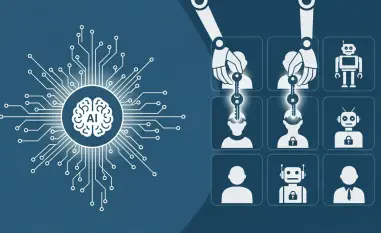The specter of a U.S. government shutdown looms large over national security, but its impact on cybersecurity often remains in the shadows until a crisis emerges, leaving critical systems exposed. As federal funding grinds to a halt, essential information technology (IT) systems and security measures become vulnerable, heightening the nation’s risk of cyberattacks. This fiscal deadlock not only disrupts the day-to-day operations of key agencies but also stalls long-term projects aimed at modernizing outdated infrastructure. With hundreds of thousands of federal workers furloughed, the ability to monitor threats, patch systems, and respond to incidents is severely compromised. The ripple effects extend beyond government walls, threatening essential services and eroding public trust in digital defenses. This pressing issue demands a closer look at how such disruptions create openings for malicious actors and undermine the nation’s technological resilience in an era of escalating cyber threats.
Immediate Impacts on Federal Cybersecurity
Operational Challenges in Key Agencies
The immediate fallout from a government shutdown manifests starkly in the operations of critical agencies like the Department of Homeland Security and the Cybersecurity and Infrastructure Security Agency (CISA). With skeletal staffing levels, routine but essential tasks such as system updates, threat monitoring, and incident response are delayed or entirely sidelined. This creates a precarious environment where vulnerabilities in federal networks go unaddressed, offering prime opportunities for foreign adversaries or criminal groups to exploit weaknesses. Experts note that even a brief lapse in vigilance can lead to significant breaches, as automated defenses alone cannot fully counter sophisticated attacks. The absence of personnel to analyze and act on real-time intelligence leaves the nation’s digital borders dangerously porous, amplifying the risk of data theft or infrastructure sabotage at a time when global cyber threats are intensifying.
Beyond the immediate operational strain, the shutdown disrupts collaborative efforts that are vital for national cybersecurity. Programs that facilitate information sharing between government entities and private sector partners are often paused, severing a critical lifeline for threat intelligence. This disconnection hampers the ability to preemptively address emerging risks, as agencies are forced to rely on outdated or incomplete data. The timing of such disruptions is particularly concerning, as many cyber attackers capitalize on periods of instability to launch coordinated campaigns. Historical patterns suggest that state-sponsored actors frequently probe for gaps during political crises, and the current funding impasse provides just such an opening. The resulting blind spots in defense mechanisms could have cascading effects, potentially compromising sensitive systems that underpin national security and public safety.
Disruption of Essential IT Services
Another pressing concern during a shutdown is the impact on IT services that support essential public functions. While certain operations like Social Security payments may continue, the administrative backbone—such as fraud detection systems—often operates with minimal oversight due to staff shortages. This leaves vulnerable populations at greater risk of scams and identity theft, as cybercriminals exploit the reduced capacity to monitor and respond to fraudulent activities. The broader implications for public trust are significant, as citizens may lose confidence in government systems designed to protect their personal information. Such erosion of trust can have lasting consequences, making it harder to implement future security measures or encourage public cooperation in digital initiatives.
Additionally, the political dimensions of a shutdown can exacerbate these service disruptions. When funding disputes lead to targeted freezes on IT projects in specific regions or states, the uneven distribution of resources weakens the overall national cybersecurity posture. This politicization of infrastructure investment creates disparities in protection levels, leaving some areas more exposed than others. Cybersecurity professionals warn that this fragmented approach invites large-scale attacks, as adversaries can target the weakest links in the chain. Social media platforms often amplify public anxiety during these periods, spreading fears of exploitation while defenses remain understaffed. The combination of operational gaps and political maneuvering thus compounds the immediate risks to essential IT services, highlighting the urgent need for stable funding mechanisms.
Long-Term Consequences for National IT Resilience
Stalling of Modernization Initiatives
One of the most enduring impacts of a government shutdown is the halting of IT modernization projects that are crucial for long-term cybersecurity. Efforts to transition legacy systems to secure, cloud-based platforms often involve multi-year contracts with private vendors, and a funding lapse disrupts payments and oversight. This not only stalls progress but also risks derailing entire initiatives, as restarting them after prolonged delays becomes logistically and financially challenging. Skilled personnel may seek opportunities elsewhere during these interruptions, further depleting the expertise needed to drive such transformations. The momentum for essential upgrades can be lost, potentially setting back critical improvements by months or even years, leaving outdated systems vulnerable to exploitation in the interim.
The broader implications of stalled modernization extend to the nation’s competitive edge in global cybersecurity. As other countries advance their digital infrastructure, delays in updating federal systems hinder the ability to keep pace with evolving threats like AI-driven attacks or ransomware. Budget uncertainties during shutdowns also deter investment in cutting-edge solutions such as zero-trust architecture, which requires consistent funding and strategic planning. Industry insiders emphasize that each day of inaction widens the gap between current capabilities and the security standards needed to protect against future risks. Without sustained commitment to modernization, federal agencies remain tethered to obsolete technologies, creating a persistent weak point that adversaries are quick to target in an increasingly hostile digital landscape.
Erosion of Talent and Trust in Federal IT
A less visible but equally damaging consequence of shutdowns is the erosion of talent and trust within federal IT sectors. Repeated funding crises contribute to a brain drain, as highly skilled cybersecurity professionals often opt for the stability of private sector roles over the uncertainty of government positions. This loss of expertise undermines the capacity to tackle complex challenges, from implementing advanced threat detection to conducting vulnerability assessments. Recruitment for high-stakes roles becomes increasingly difficult when budget instability signals a lack of long-term commitment to IT priorities. The resulting talent shortage creates a vicious cycle, where diminished capabilities lead to greater vulnerabilities, further discouraging potential hires.
Compounding this issue is the ambiguous classification of “essential” operations during a shutdown, which often sidelines proactive cybersecurity tasks. Activities like routine system audits or strategic planning are deferred, even though they are critical for preventing future breaches. This patchwork approach risks cascading failures across unpatched networks, amplifying the threat of ransomware or state-sponsored hacks. Public and private sector trust in federal IT leadership also suffers, as stakeholders question the government’s ability to safeguard sensitive data amid recurring disruptions. Over time, this loss of confidence can hinder partnerships and collaborative defense efforts, leaving the nation more isolated in addressing cyber threats. The long-term damage to both human capital and institutional credibility underscores the need for resilient funding models to shield IT operations from political turbulence.
Building a Path to Cyber Resilience
Reflecting on the challenges posed by the recent government shutdown, it becomes evident that the halting of IT security projects and the resulting increase in cyber vulnerabilities expose systemic flaws in how federal technology is prioritized. The operational strain on agencies, coupled with stalled modernization and talent loss, paints a sobering picture of a nation grappling with immediate risks and long-term setbacks. Each day of fiscal gridlock sees defenses weaken, as critical tasks are deferred and collaborative efforts falter under the weight of uncertainty. The intersection of political impasses and technological needs reveals a stark reality: cybersecurity cannot afford to be a casualty of partisan divides.
Looking ahead, actionable steps emerge as a beacon for mitigating such crises in the future. Policymakers must prioritize the establishment of emergency funding mechanisms to ensure continuity of essential IT operations during shutdowns. Bipartisan commitment to sustained investment in modernization and talent retention can help rebuild trust and capacity within federal agencies. Additionally, clearer definitions of “essential” cybersecurity tasks could prevent the sidelining of proactive measures. By fostering resilient systems that withstand political turbulence, the nation can strengthen its digital defenses and maintain a robust stance against evolving cyber threats, ensuring that fiscal disputes no longer jeopardize national security.













